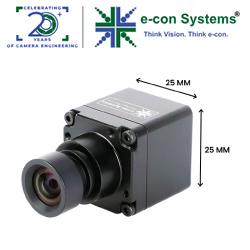U.S. labor statistics project we will be short some two million manufacturing workers in the next 10 years.
What Manufacturing Needs
Pamela Kan | Bishop-Wisecarver Group
The manufacturing firm which I run, founded by my father, has been going strong for 65 years. For me, this isn’t just a business or a job, it’s personal.
During the recent election season, we heard many a politician and pundit either extolling the virtues of U.S. manufacturing or waxing nostalgic about how that part of our economy is from some bygone era. Like all things, the reality is far more nuanced than what fits neatly into a tweet or a sound bite. U.S. manufacturing is quite strong with solid indications of future growth.
But ironically, that’s the problem. U.S. labor statistics project we will be short some two million manufacturing workers in the next 10 years.
Worrying about how we continue to build our team is already what keeps me and every other U.S. manufacturer up at night. Here’s just one example. We had tons of business coming in and tight deadlines to meet, but that master machinist position we had begun recruiting for months earlier sat vacant and did so for almost a year. We were endlessly scrambling to cover the scheduling gap. Now that we have that new member of the team, it will only be a matter of time before the next seasoned veteran begins to consider retirement.
Why is U.S. production so short of these skilled workers?
I think it comes down to messaging. It sends the right message when manufacturers connect with communities through classroom presentations and factory tours, maker fairs, and by encouraging all kids to explore hands-on STEM curricula. It sends the wrong message when the cover of Girl’s Life pushes fashion & beauty and Boy’s Life highlights future careers. It also sends the wrong message when talking heads suggest all skilled workers will someday be replaced by automation. In fact, production teams are ever more dependent on one another to contribute their ideas and expertise to running high tech operations.
 For me and my team, manufacturing is very personal, and if we take the time and effort to connect with our communities, future generations will be more apt to say the same.
For me and my team, manufacturing is very personal, and if we take the time and effort to connect with our communities, future generations will be more apt to say the same.
With a Perspective, this is Pamela Kan.
Pamela Kan is president of an East Bay manufacturing company who promotes STEM education and high tech careers in manufacturing.
This article is reprinted from KQED Radio with permission.
The content & opinions in this article are the author’s and do not necessarily represent the views of RoboticsTomorrow
Featured Product

